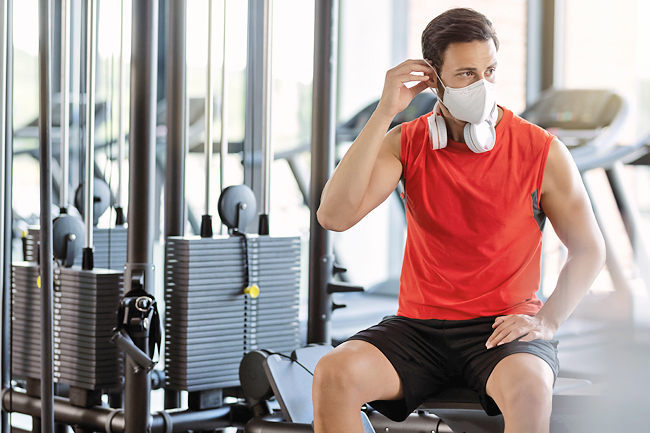XINHUA – People frequent gyms to maintain their fitness levels, but what about the quality of the air they breathe in these confined spaces?
Chinese researchers have recently delved into this question through a case study.
Led by Professor Sun Yele from the Institute of Atmospheric Physics under the Chinese Academy of Sciences, a research team examined the composition and concentration of pollutants within a basement gym. Their findings, published in the journal Environmental Science and Technology Letters, shed light on the air quality of indoor fitness environments.
“The gym’s proximity to our office provided an ideal setting for our investigation. Over a span of 20 consecutive days, we meticulously analysed the air using a high-resolution aerosol mass spectrometer,” said Sun.
Their study revealed that the indoor air within the gym exhibited a higher proportion of organic aerosols (OA) compared to the outdoor environment.



“Approximately 50 per cent of the particulate matter inhaled within the gym comprised OA, a notable increase from the roughly 40 per cent observed outdoors,” Sun added.
Two distinct types of OA were identified within the gym atmosphere. The first, siloxane organic aerosols (SiOA), stood out due to unexpectedly high concentrations, comprising seven to 11 per cent of the total OA present. Sun attributed the presence of SiOA to the silicone polymer lubricant used in fitness equipment during exercise.
The researchers detected cigarette smoke organic aerosols within the gym, which likely entered the indoor environment from adjacent spaces such as a nearby parking lot. OA stemming from cooking activities in the nearby canteen were also found to contribute to the indoor air quality within the gym.
“The ventilation system of the gym might inadvertently draw in pollutants from external sources,” Sun said. “While our study represents a single case, it underscores the susceptibility of gyms to surrounding emission sources.”
The researcher believes that understanding the composition and concentration of pollutants in the gym environment is crucial for evaluating the potential health risks associated with physical exercise.
“During exercise, heightened respiratory rates increase the inhalation of these particles, which could potentially impact our health,” Sun said.
The study advocates comprehensive assessments of air quality across various gym facilities, considering factors such as equipment diversity, occupancy rates and ventilation systems.
Such investigations are instrumental in devising effective strategies to safeguard indoor air quality and mitigate health risks associated with gym attendance.
“We aim to expand our research by conducting case studies across multiple gyms to validate the universality of the pollution particles identified in this study,” Sun said.









